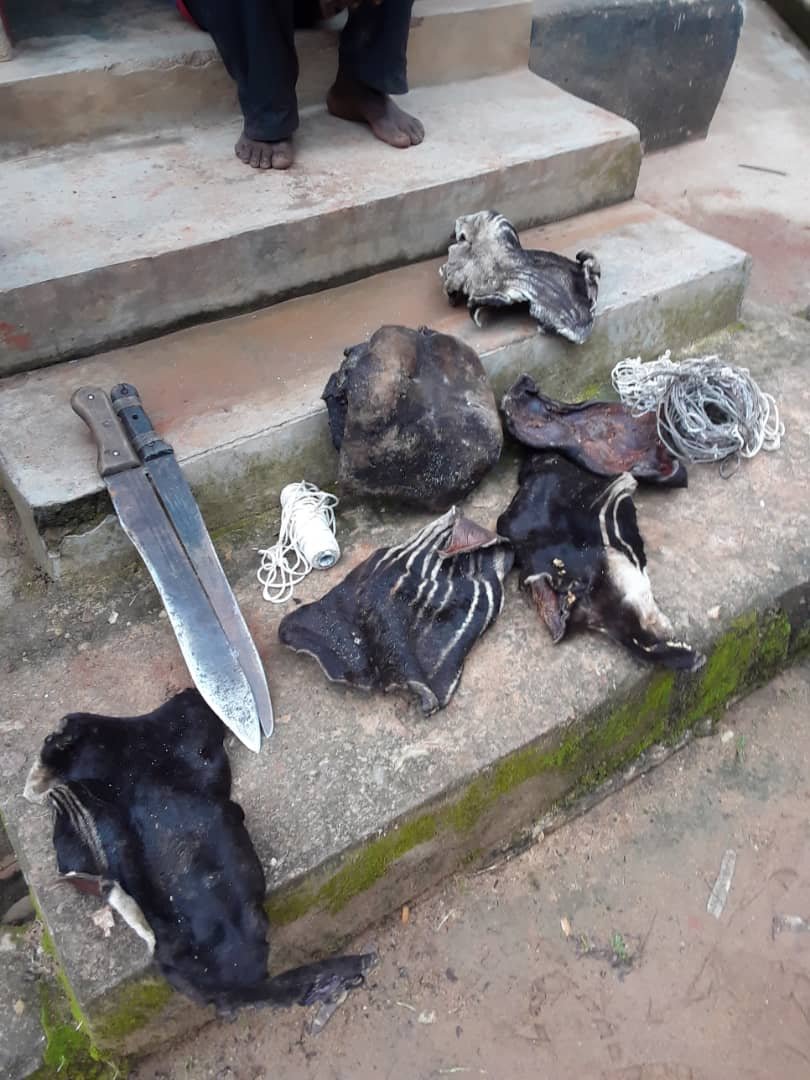An Alarming Trend in Trafficking of Okapi Skin and Parts
Okapi are endangered relatives of giraffes found only in the remote forests of DRC, so distinctive and rarely seen that they are sometimes called Africa’s unicorns. The Reserve is one of their last known strongholds, housing approximately 3,200 okapi as of a 2018 census. Their ornate skins are sold as decorations, while okapi meat, bones, and fat are targeted for sale to international markets, with every part allegedly being sold for thousands of dollars. In addition to okapi skins and body parts, authorities have also recovered leopard skins, forest elephant tusks, and pangolin scales and bushmeat from intercepted shipments.
With OCP providing financial support through the Wildlife Conservation Network and other sources, Conserv Congo is leading a thorough response to the trafficking of okapi and other wildlife, and their investigations revealed that 80% of the illegal wildlife products seized in Uganda originate from DRC.
Okapi skin curing in the sun.
Together with DRC and Ugandan authorities, Conserv Congo created a taskforce to pursue these wildlife criminals on both sides of the border. Their large informant network helps identify the sellers and buyers of okapi products. OCP’s close relationship with DRC communities and ICCN ecoguards plays a crucial role in this pursuit, helping Conserv Congo receive tips on poaching activity, develop a map of trade routes, and collect intelligence that facilitates arrests. By exchanging data and launching investigations, this taskforce has successfully captured nine traffickers in possession of okapi products and is currently investigating another eight. OCP funding allows Conserv Congo to stay involved throughout the lengthy prosecution process to ensure each trafficker is appropriately sentenced.
Okapi fat is trafficked in unmarked bottles, often concealed under the guise of domestic animal fat.
Together with DRC and Ugandan authorities, Conserv Congo created a taskforce to pursue these wildlife criminals on both sides of the border. Their large informant network helps identify the sellers and buyers of okapi products. OCP’s close relationship with DRC communities and ICCN ecoguards plays a crucial role in this pursuit, helping Conserv Congo receive tips on poaching activity, develop a map of trade routes, and collect intelligence that facilitates arrests. By exchanging data and launching investigations, this taskforce has successfully captured nine traffickers in possession of okapi products and is currently investigating another eight. OCP funding allows Conserv Congo to stay involved throughout the lengthy prosecution process to ensure each trafficker is appropriately sentenced.
Okapi skin confiscated with machetes and snares.



